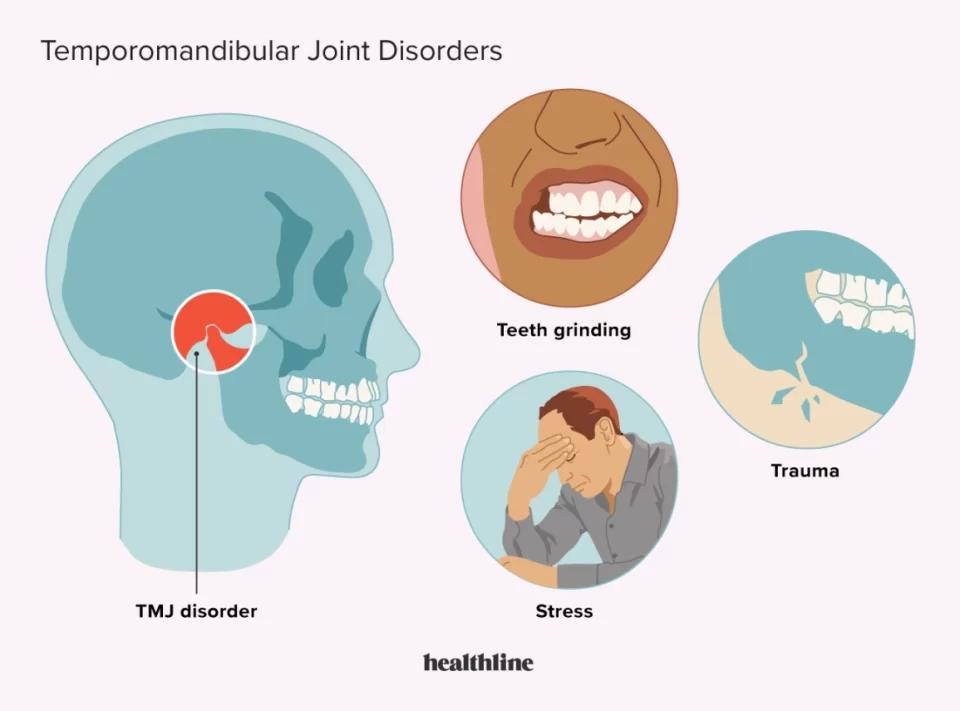TMJ stands for the temporomandibular joint where the lower jaw connects to the skull. TMJ disorder is a condition affecting this joint, characterized by pain and limited range of motion in the jaw. It can be difficult to know whether you have TMJ disorder in some cases, so it helps to learn the signs and symptoms. If you are experiencing any of the following, schedule an evaluation with your dentist.
Common Symptoms of TMJ Disorder
The following symptoms are often an indication that TMJ disorder is present:
- Pain in the TMJ. The temporomandibular joint can become inflamed, causing pain in the joint itself. Place your fingers in front of your ears where the ear canal opens. Open and close your mouth and you should feel the movement in the joint. If this is where your pain resides, TMJ disorder is likely the cause.
- Pain in the cheeks. TMJ disorder can cause the muscles of the face to tighten up, which can lead to pain in the cheeks and other parts of the face. The tightness comes from inflammation and swelling of the muscles, tendons, and ligaments of the TMJ.
- Tightness in the jaw. Your jaw may also feel tight due to TMJ disorder. When you move your jaw it may feel like your range of motion is limited.
- Difficulty opening and closing your mouth. With severe TMJ disorder, you may find it difficult to open and close your mouth. When you try to open widely to bite into a sandwich or when you yawn your mouth may not open fully or it may be painful to do so. You may be unable to close your jaw or when you do, your teeth don’t meet together as they once did.
- Popping or clicking sound in the jaw. You may hear a popping or clicking sound in your jaw when you open and close your mouth or when you chew. This may be the sound of the tendons and ligaments sliding over the bones or the bones grinding together. There is a disc that cushions the temporomandibular joint, and if this disc slips out of place the bones will grind together.
- Pain when chewing. If you experience pain when you chew, it could be caused by TMJ disorder. The pain should be in the area of the TMJ and not in your teeth or gums. The location of the pain helps to determine the cause.
- Headaches. You may find that TMJ disorder causes you to get headaches in the temple region of your head primarily, but it can also occur in the back of your head and in your neck where the muscles of the jaw and face wrap around.
- Ear pain. A tricky symptom of TMJ disorder is ear pain. The location of the TMJ is so close to the ear that the pain can resonate in the ear canal. Patients often mistake it for an ear infection, when it is actually TMJ disorder.
Treatment for TMJ Disorder
TMJ disorder can be treated through a variety of methods. Start by applying ice to the area and taking anti-inflammatory pain medication. Rest your jaw as much as possible, eating soft foods and avoiding excessive movement of the jaw.
If these home remedies don’t eliminate your TMJ symptoms, contact your dentist. After an evaluation and diagnosis, your dentist may recommend BOTOXⓇ injections or a stabilization splint. If symptoms persist, your TMJ disorder may require surgical treatment.
Upper West Side Oral and Maxillofacial Surgery provide diagnosis and treatment of TMJ Disorder. They focus on the source of the disorder, helping eliminate patients symptoms as well as their cause.
